Scottish Shelf Model. Part 6: Wider Domain and Sub-Domains Integration
Part 6 of the hydrodynamic model developed for Scottish waters.
6. Connectivity Indices
6.1 Methodology
The final step is construction of Connectivity Indices between the FMAs. The likelihood of larval exchange between FMAs is represented using the following matrices:
- Distance matrix of the separation of individual Management Areas: this can be easily calculated as a straight line distance but will be less than the actual seaway distance that must be travelled.
- Transitional Probability Matrix P ij (hereafter termed the Connectivity Matrix) representing the probability that an individual particle released at the source i will disperse to the destination j, over a given period of time.
The method of calculation of P ij is as follows:
- Capture all particles which are 'infective' at each FMA downstream of original release FMA (includes self-recruitment). For sea lice this means capturing particles during the last 2/3 of the tracking period. For ISAV the capture period is the first 3 days of the virus run. For IPNV the whole of the virus tracking period is used. A 3-D array has been produced, named inxy_<mmm>_<bb> (np,nf,nh), for each month ( mmm) and both sea lice and virus runs ( bb= sl or vr). The dimensions are np (number of released particles), by nf (number of target FMAs) and nh (number of hours). From this matrix various outputs can be calculated.
- Sum over all particles starting in each origin FMA to get an 86x86 array containing numbers of particles, at each hour of the tracking period.
- Normalise by number of release points within each FMA to give a percentage of points released which are captured within any target FMA at any time.
- Finally, decide on how to plot array e.g. whole period, final destination. An alternative is to flag each FMA reached from origin FMA i.e. one or zero is recorded depending on whether a particle does or does not reach a given FMA from a specific starting FMA.
6.2 Sea Lice Connectivity
Figures 6-1 - 6-4 show different plots of the connectivity matrix for the sea lice runs for each season: January, April, June and October. The left hand panel plots the probability of a particle being found in FMA j, from original release at FMA i. The right hand size is the mean probability of capture over the whole infectious period. The colour bar is in 10% intervals. It may be seen that most coloured pixels lie on the diagonal, representing self-recruitment. A few particles move to an adjacent FMA.
Particles appear to move further from their original positions in July and least far in January, despite the fact that the January tracking period is longest and July the shortest.
Figure 6-5 shows the 0/1 flags indicating whether there is at least one particle captured at the target from the origin FMA, over the whole period. This is more sensitive to only a few particles being captured than the previous figures so it can be seen that seen that there is some exchange between the Inner Hebrides ( FMA numbers ~40-50) and the Western Isles (64-86) which are adjacent areas with similar latitude.
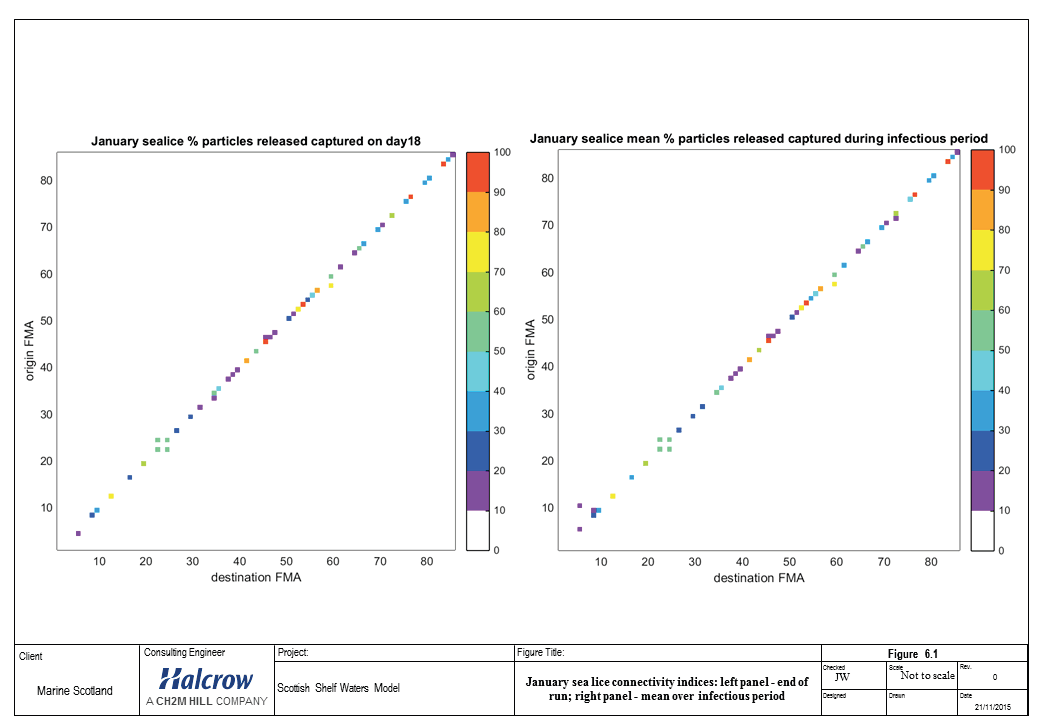
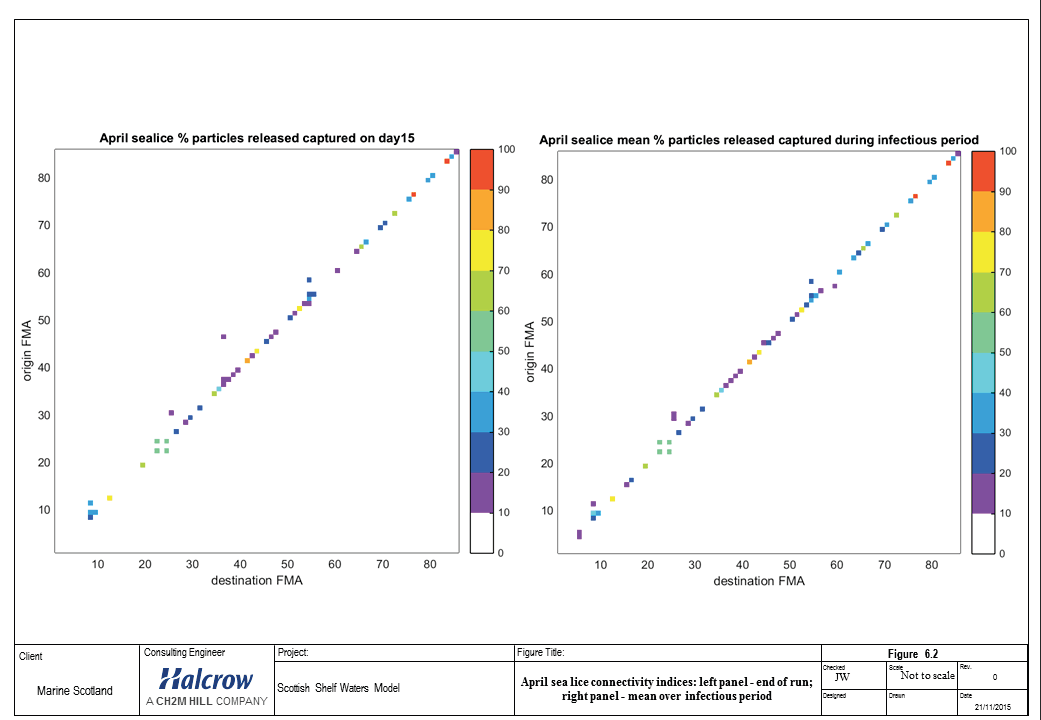
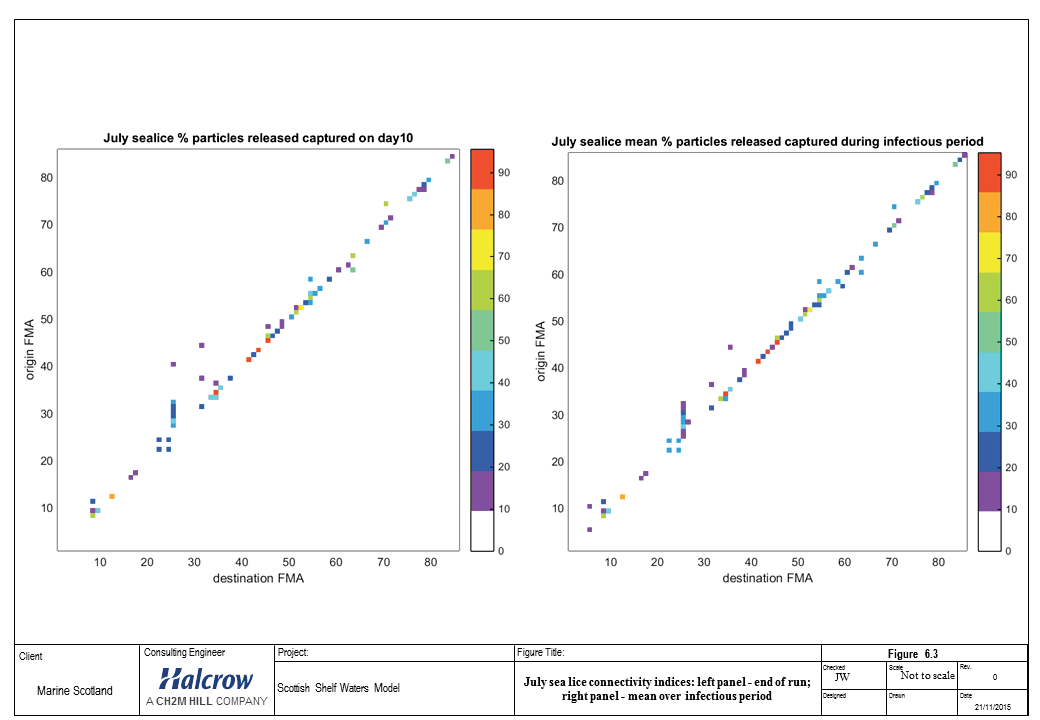
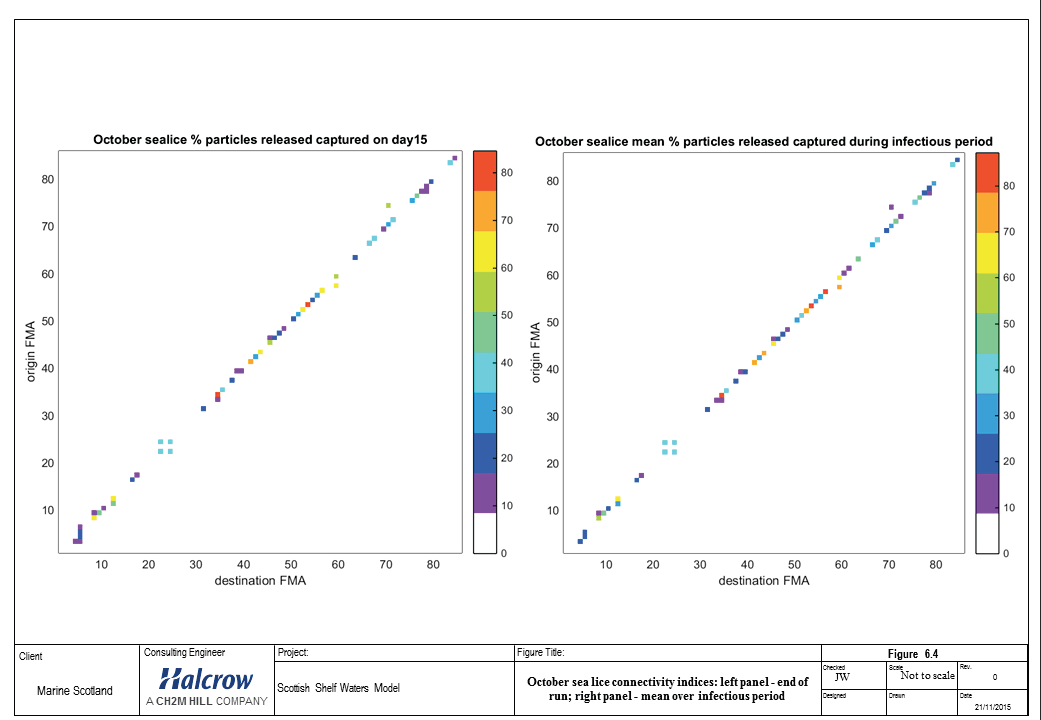
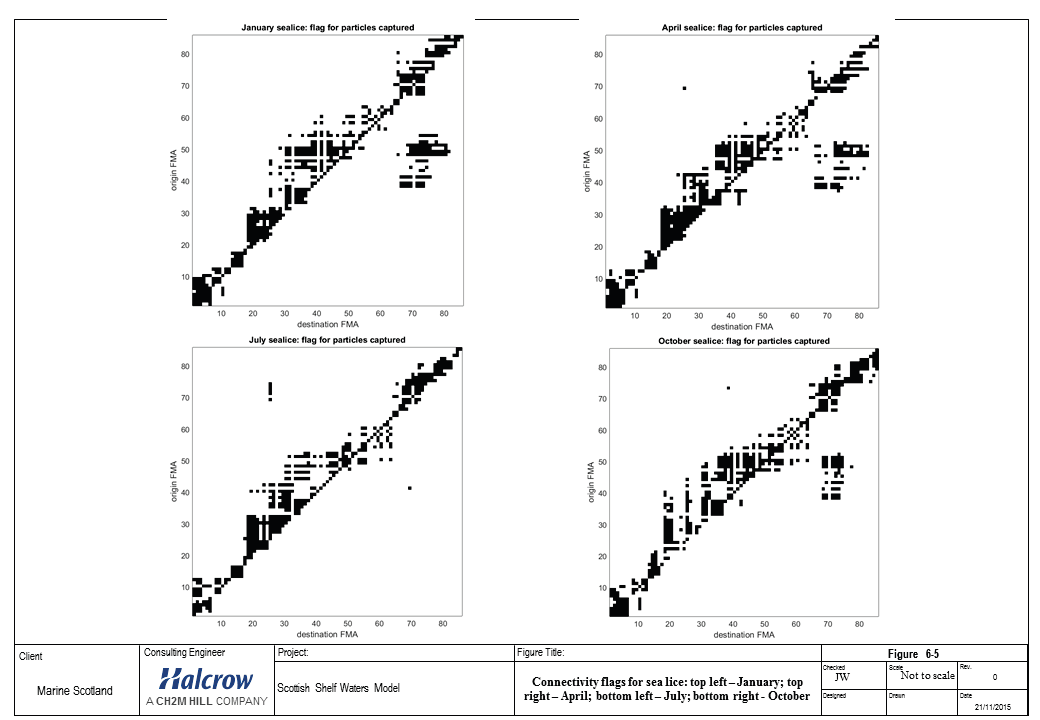
6.3 ISAV Connectivity
The following figures (6-6 - 6-13) show results for the 1 st 3 days of the virus-tracking period, representing the viable infective period of the ISA virus. This is a very short duration virus so less connectivity between adjacent areas is seen.
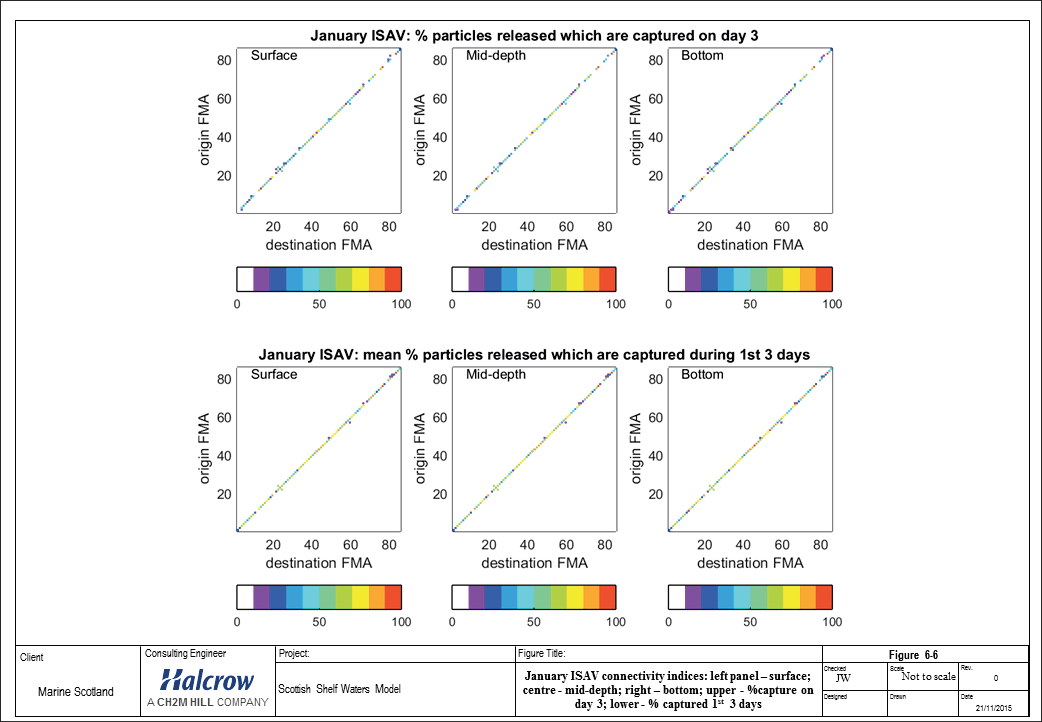
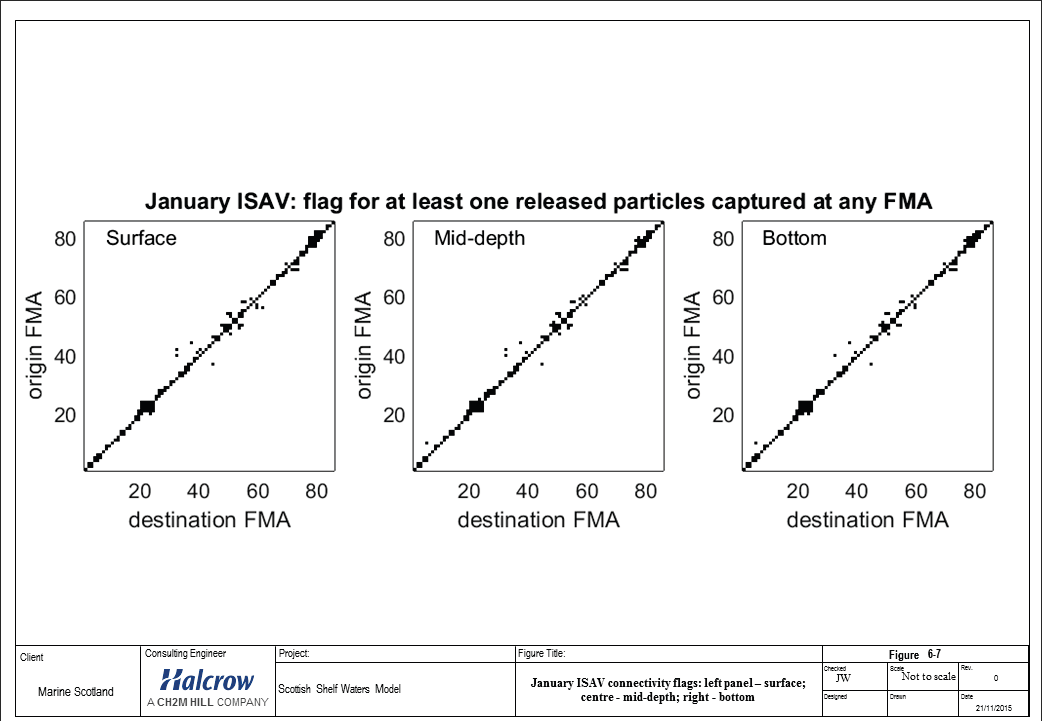
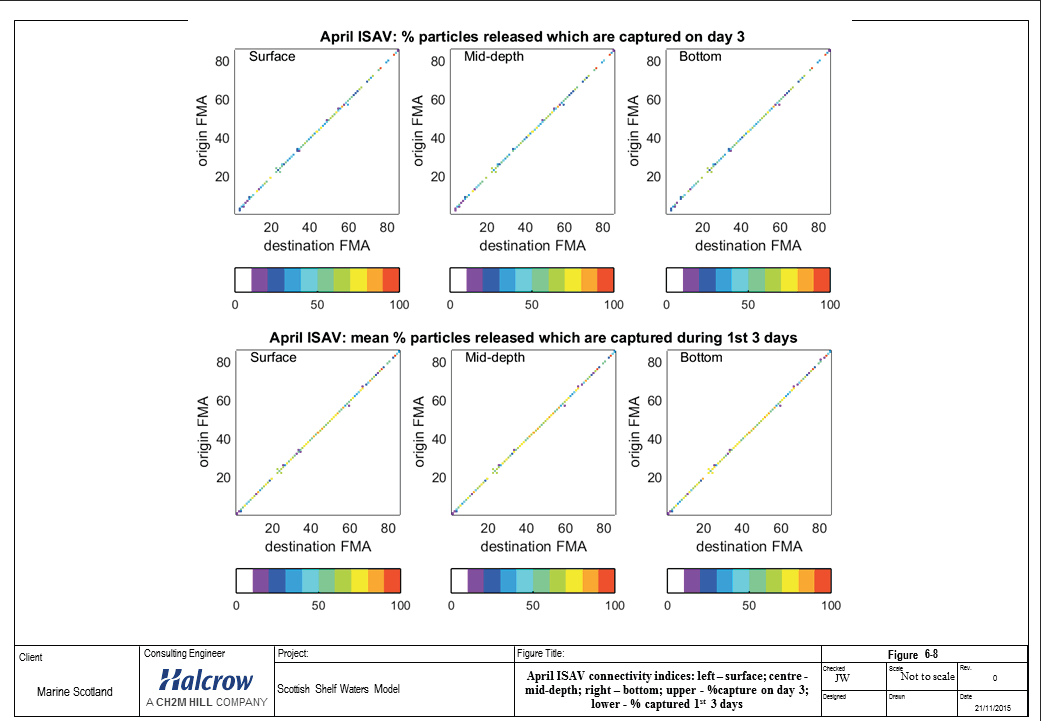
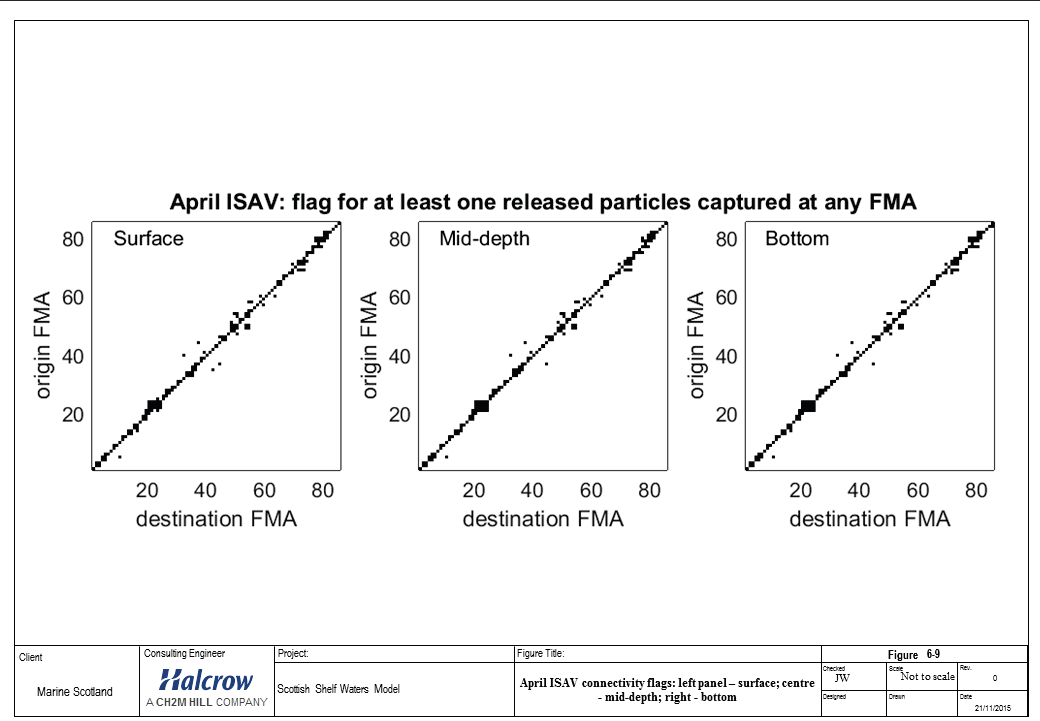
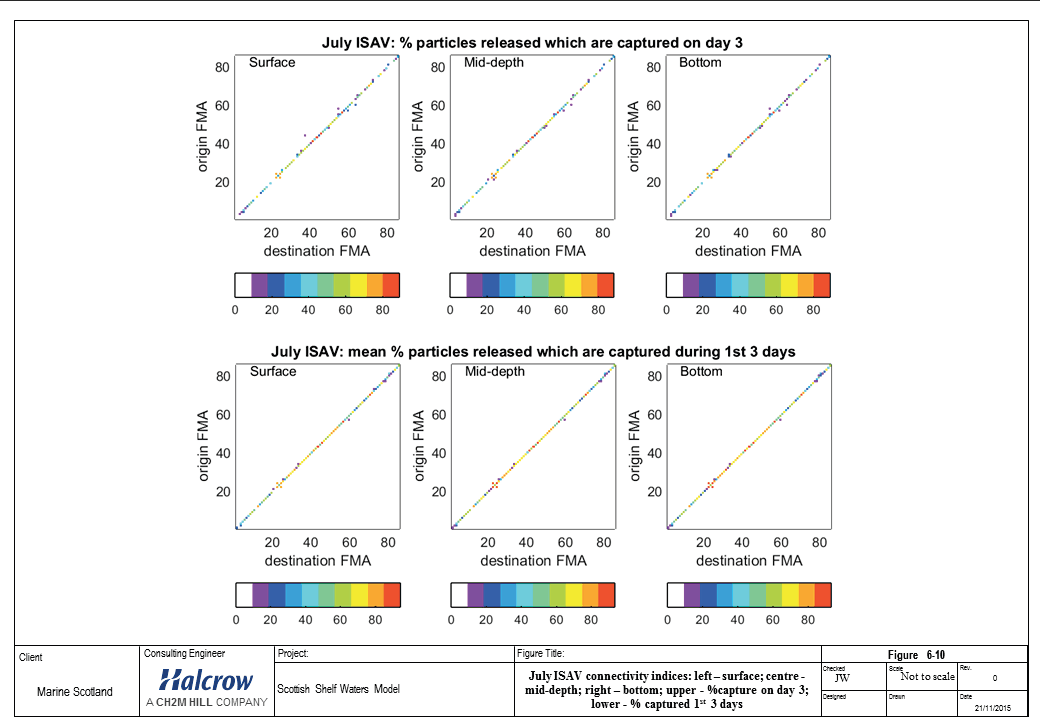
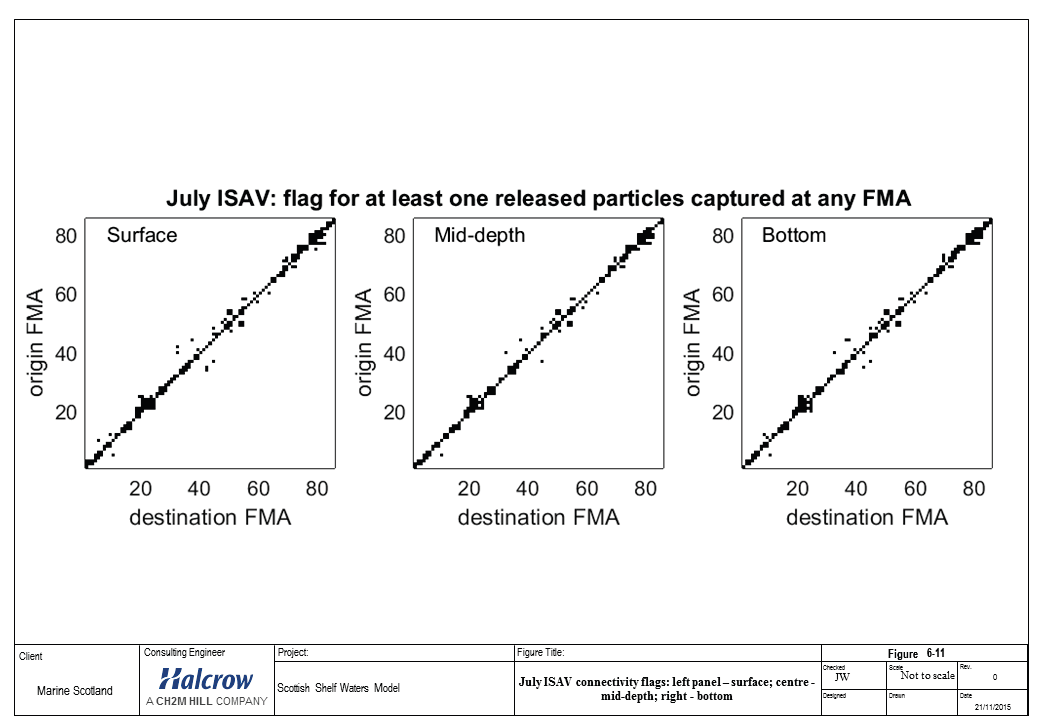
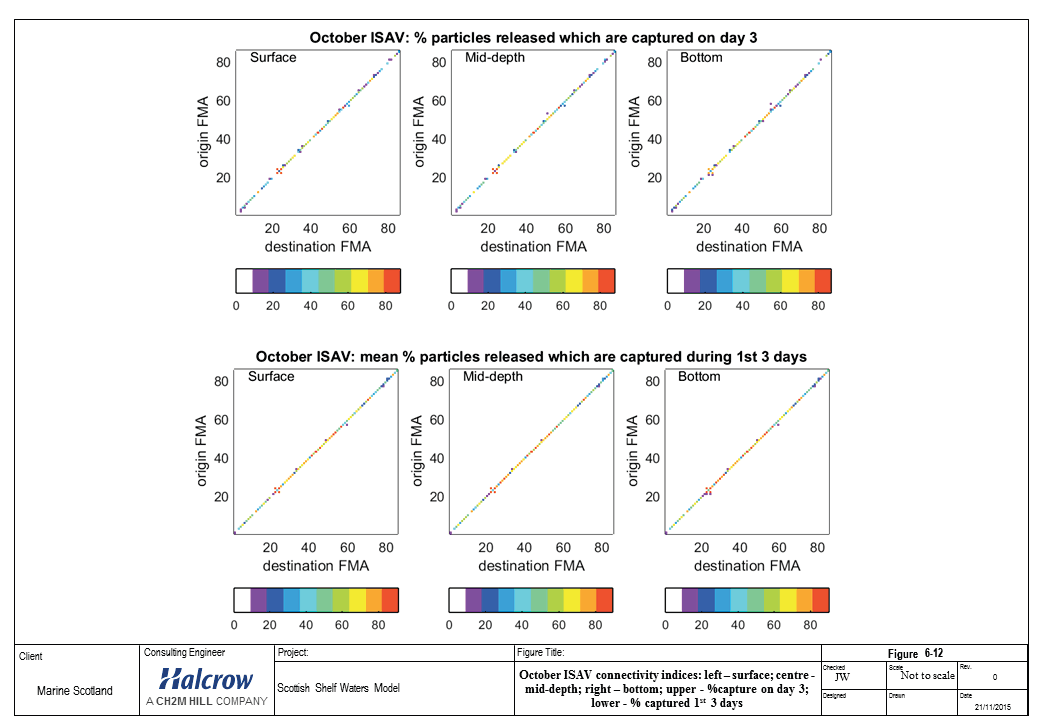
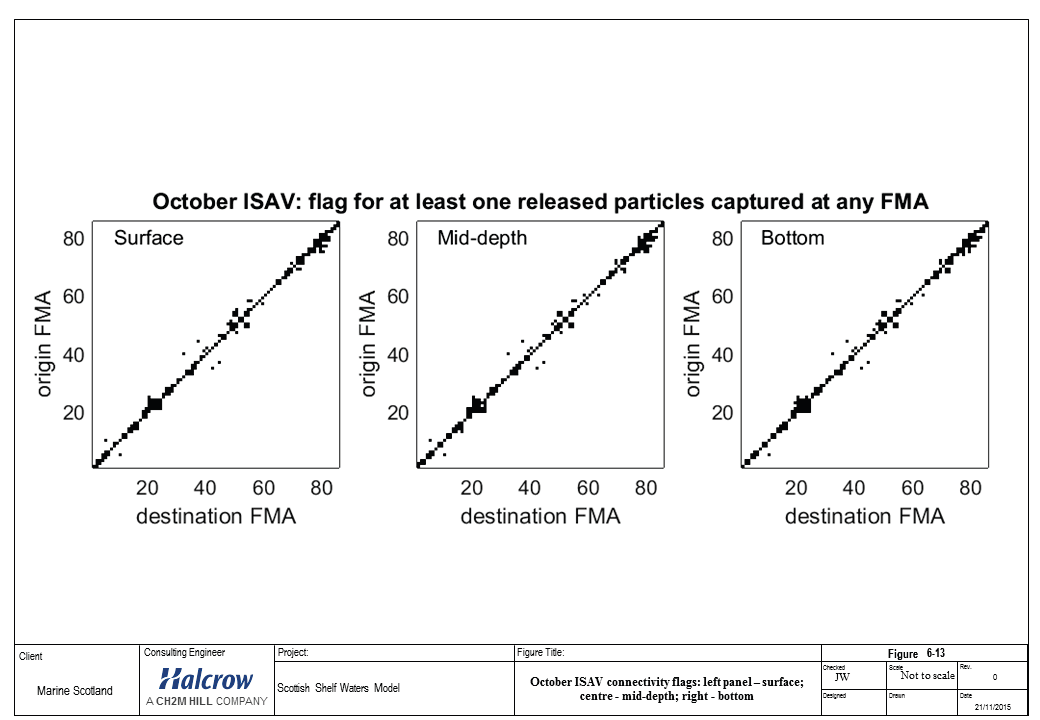
6.4 IPNV Connectivity
The following figures (6-14 - 6-21) show results for the whole of the virus-tracking period, representing the viable infective period of the IPN virus. Due to the longer duration there is more connectivity, similar to the sea lice tracks. It may be seen that there is little difference between particle releases at surface, mid-depth or bottom.
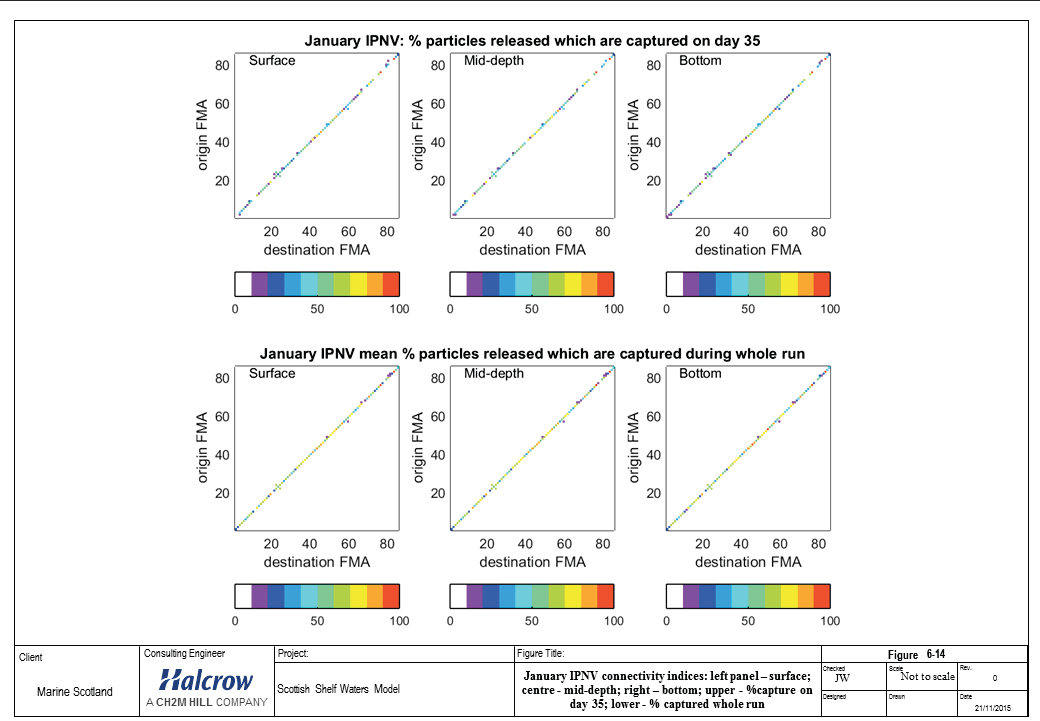
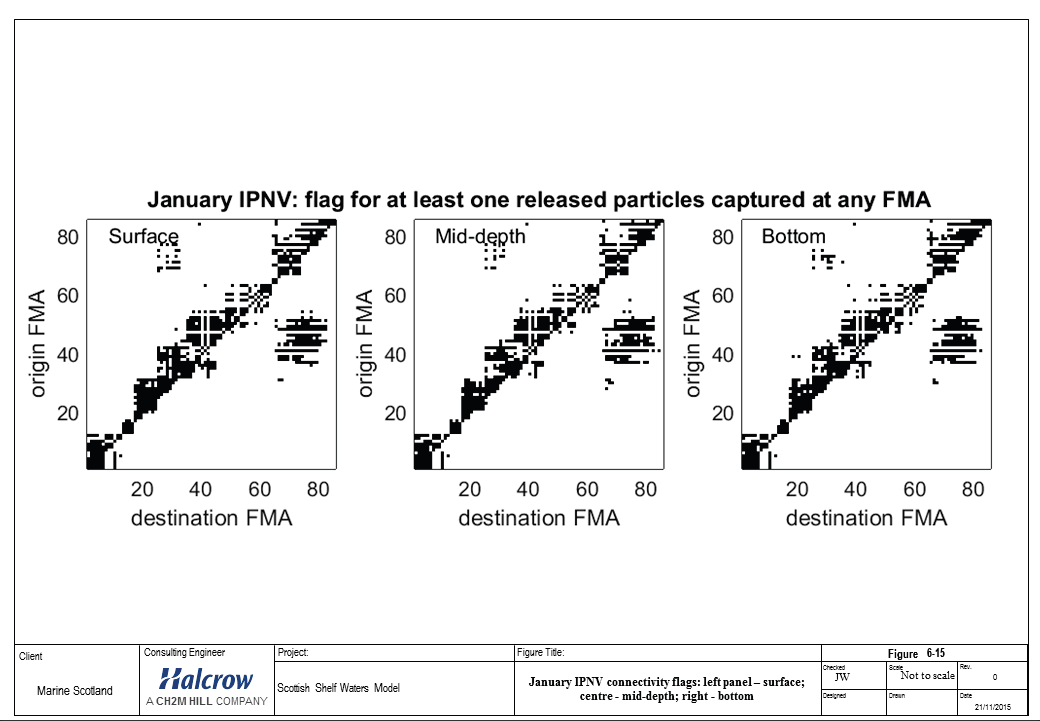
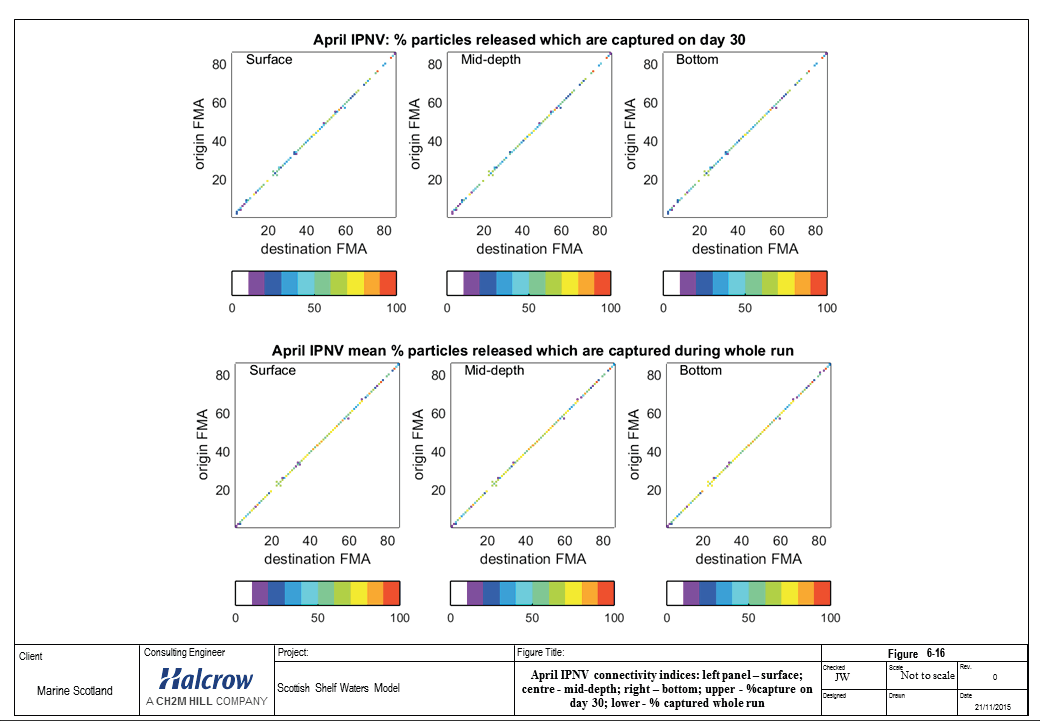
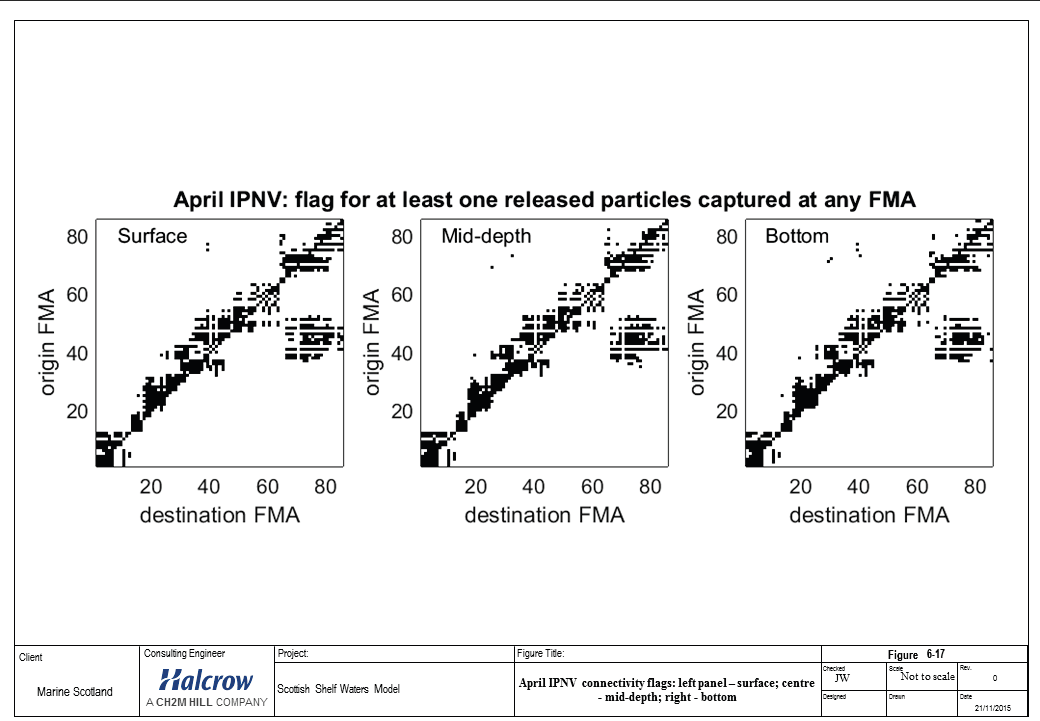
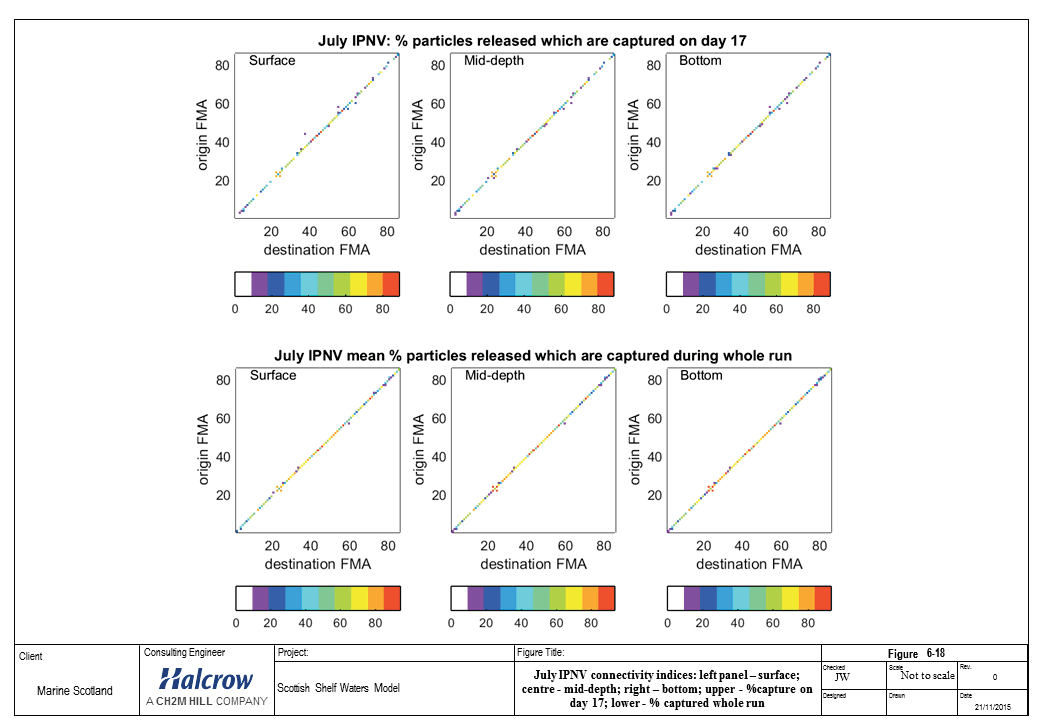
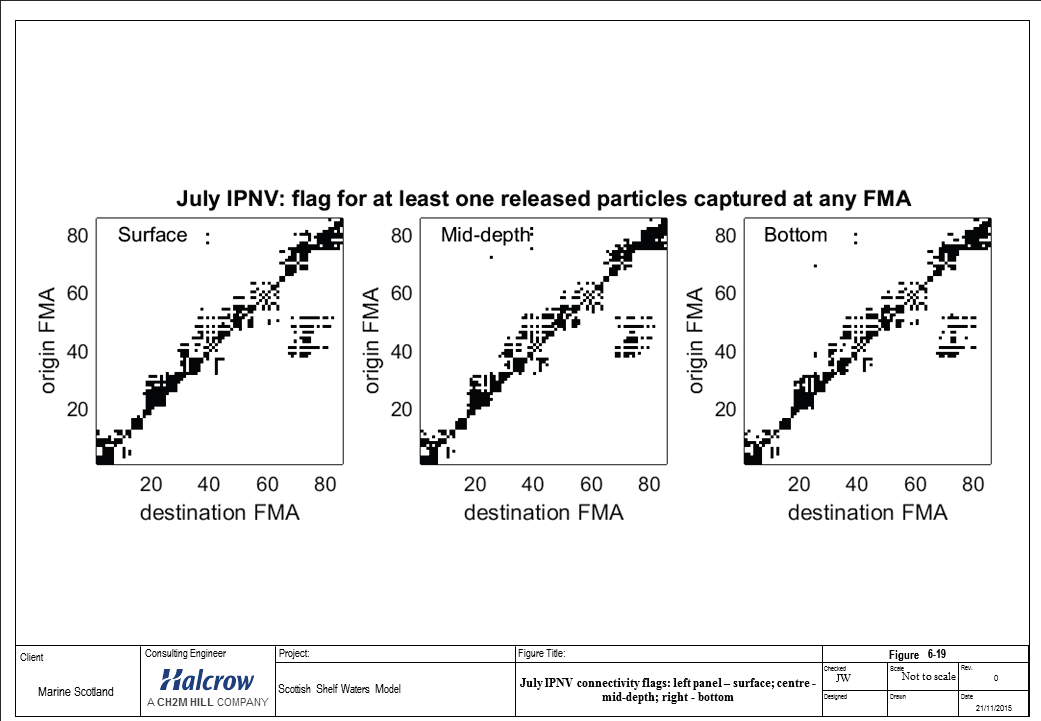
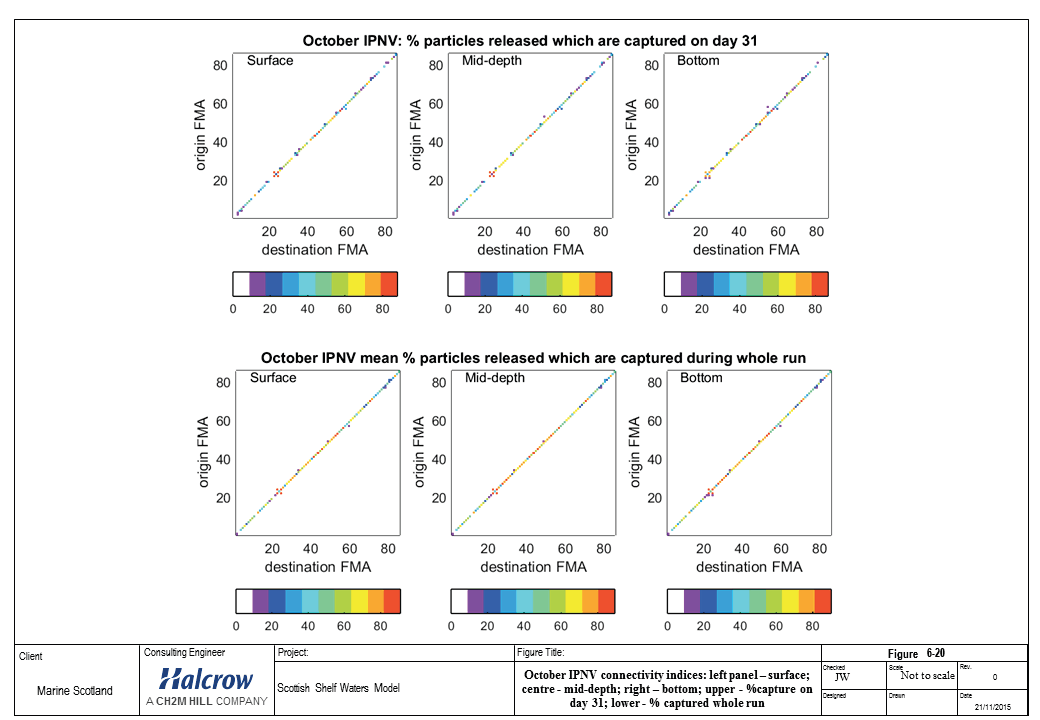
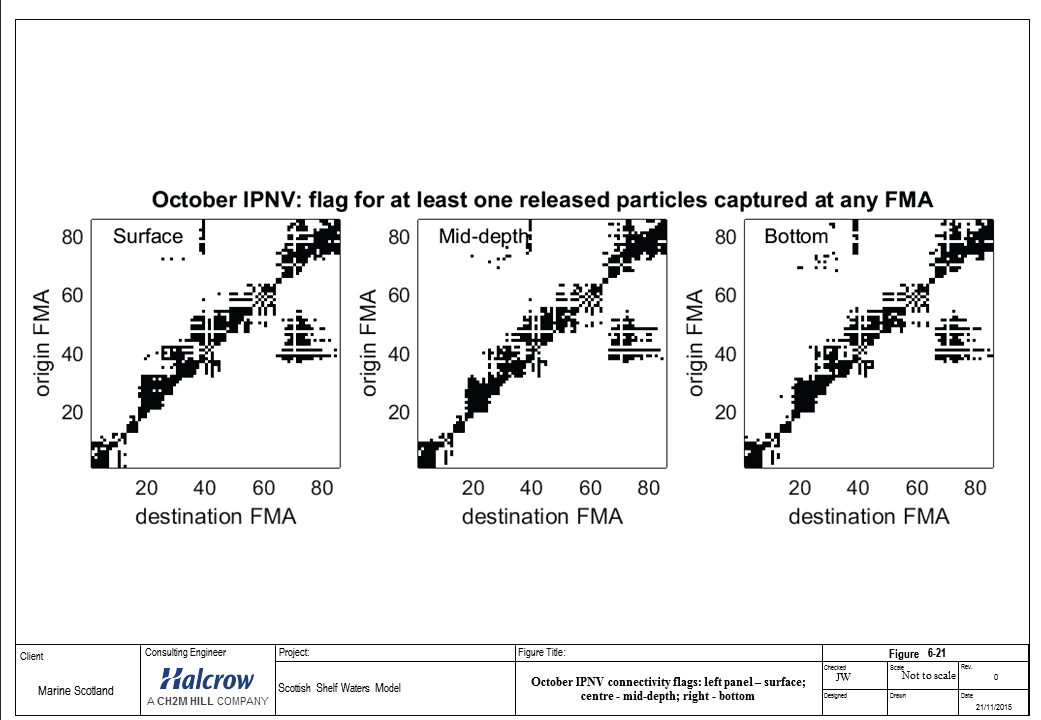
Contact
There is a problem
Thanks for your feedback